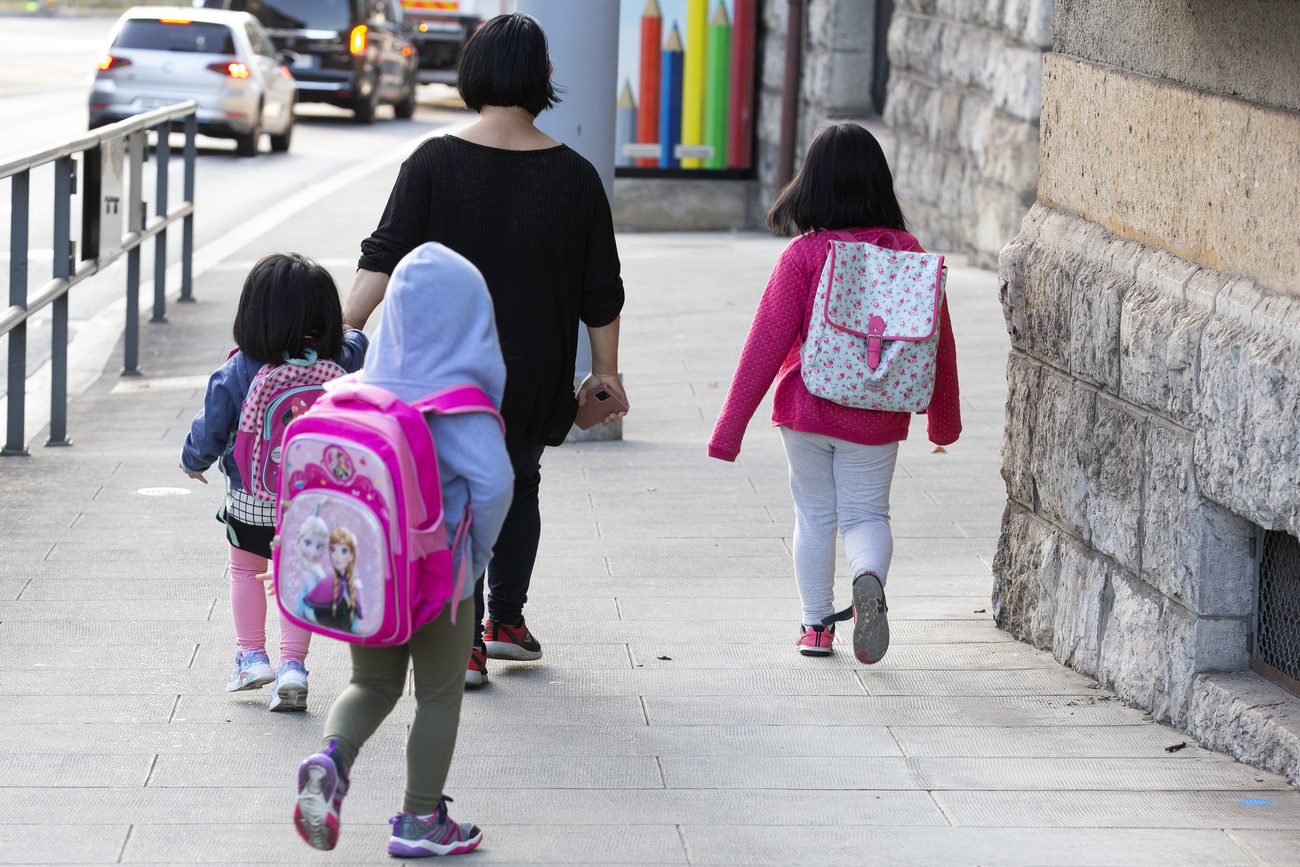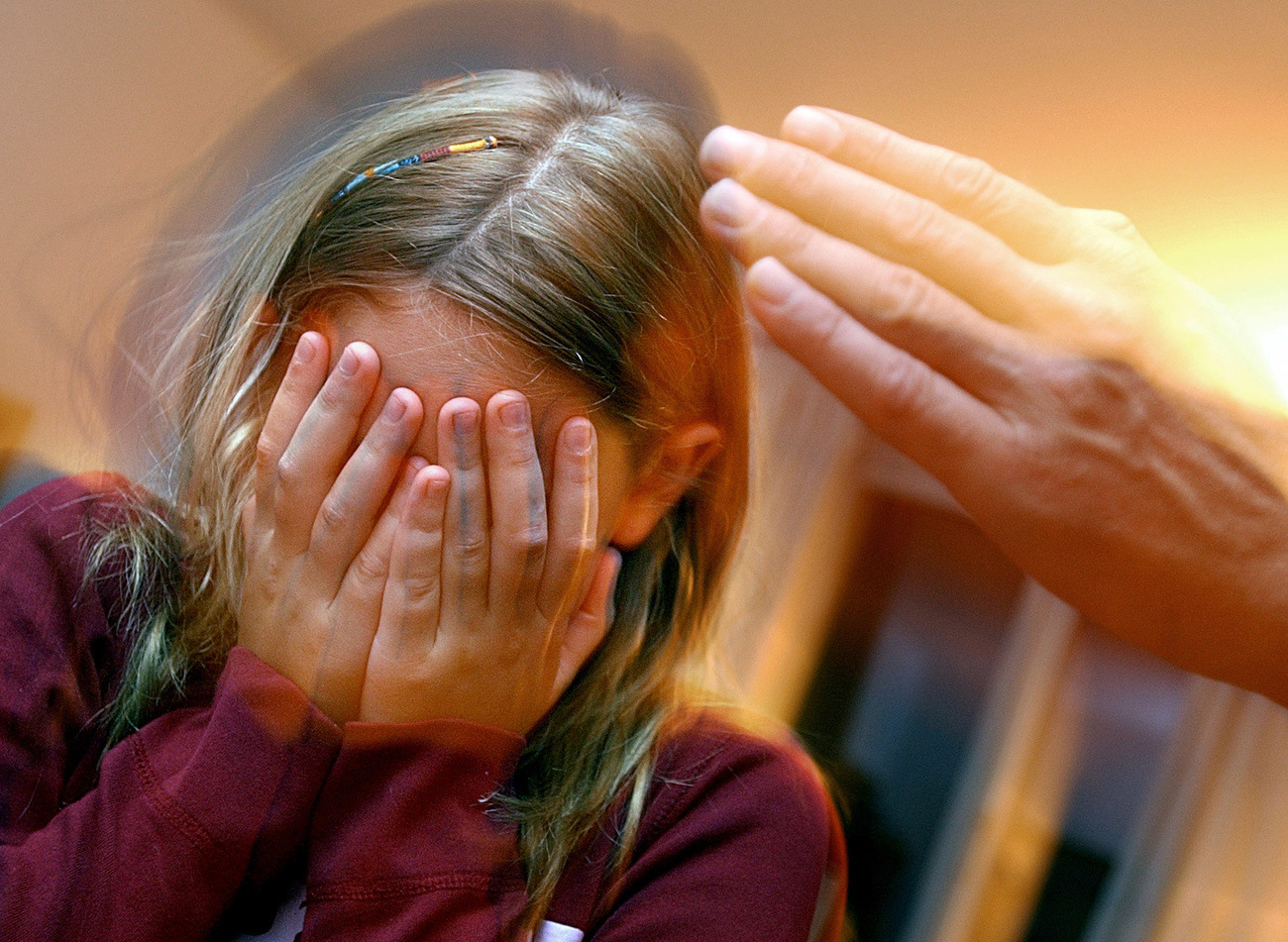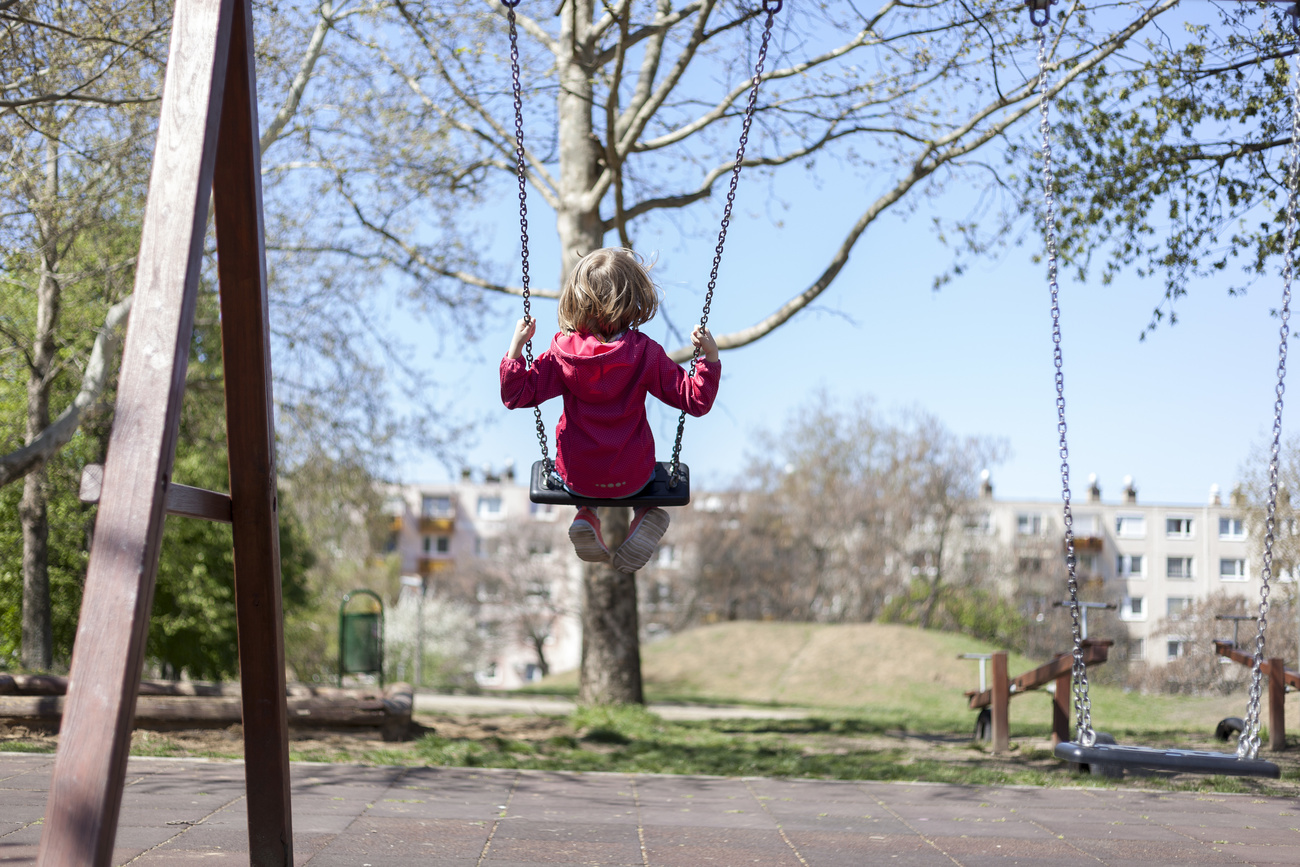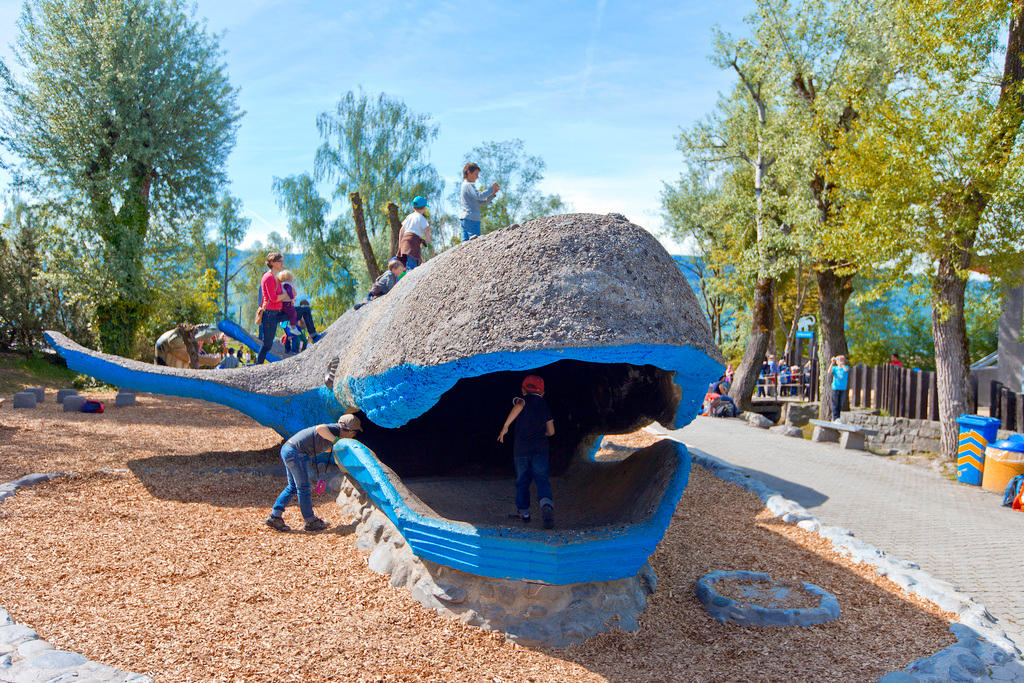Why children have disappeared from Swiss city streets

Children have gradually disappeared from urban spaces over recent decades. It’s a trend that can be seen in many countries, and one that poses a number of problems. Several cities around the world, including Basel in Switzerland, have set up projects to rethink public space from a child’s point of view.
Beyond the playground, it’s increasingly rare to come across children playing in the street or walking to school independently.
We also sometimes talk about the “back-seat generation”, referring to children who see the city through car windows. Not to mention “no kids” places or events – cafés, hotels or weddings – where they are officially no longer welcome.
“At the end of the 20th century and the beginning of the 21st century a long-term process of children’s withdrawal from public spaces occurred,” said sociologist Clément Rivière, author of the book Leurs enfants dans la ville (Their children in the city), on Swiss public radio, RTSExternal link.
There are many reasons for this disinvestment. The car is often cited: cities have gradually been shaped to allow as many vehicles as possible to circulate during rush hour. And with this in mind, pedestrians, particularly people with reduced mobility and children, are not given priority.
Digitalisation is also mentioned. Social networks make it possible to communicate and meet up with friends without having to travel, while the rise of video games, for example, has made home entertainment more diverse. The various services available online are also increasing the tendency to stay at home.
Increased risk aversion
Society is also more sensitive to the risks facing children. “This is something that has become much more pronounced in Europe, particularly following the Dutroux affairExternal link in Belgium in the 1990s,” Rivière says, referring to Marc Dutroux, who in 2004 was eventually given a life sentence for the multiple murder and rape of children. He had previously been released on parole after only three years in prison for abducting and raping young girls. “This created a very high social profile for the paedophile and a very real fear […] that children might have a bad encounter in public places.”

More
Almost half of children in Switzerland experience domestic violence
Generally speaking, children were “increasingly perceived as vulnerable beings” over the course of the 20th century, Rivière says. Parenting standards have changed. He says he has spoken to parents who, as children, remember travelling alone through big cities, but who would never dream of letting their own children do the same. “The social view of these practices, from other parents, schools and public discourse, has evolved towards a much greater awareness of the risks,” he says.
But in his view, this dynamic is problematic, not least because it delays the moment when young people become autonomous in the city. “This means that their range of mobility has shrunk, as has the amount of time they spend independently in public spaces.”
This trend is not inevitable. In recent years, various local authorities around the world have set up projects to “give the city back to children” and offer an inclusive public space, designed by children for children, and adapted to the reality of the countries concerned, such as the “Eyes at 1m20External link” project launched in Basel in 2019.
In Switzerland, Basel launched “Eyes at 1m20” in 2019, a project to adapt street furniture and signs to children’s height. It also involves working with children to rewrite building regulations, taking their suggestions into account.
The town of Fano in Italy has shops marked with a logo where children know they can ask for help and feel welcome and safe. “There’s a sticker that children can spot where they know that if they want to ask for directions or go to the toilet, these shopkeepers are committed to helping them,” says Sylvain Wagnon, professor of education at the University of Montpellier.
In Spain, the city of Barcelona has created green, semi-pedestrianised islands in certain streets, which residents can use how they please. The activities will therefore be different in a district with a lot of children or, on the other hand, an area populated by elderly people.
Creativity and sense of adventure
A more child-friendly city also means polymorphous places whose uses are not dictated by town planners or the authorities.
Parisian architect Madeleine Masse, who works on these issues of inclusion, explains that certain things often come up in the interviews she conducts with children. “They talk about colours, vegetation, small embankments. The fact that there are raised bits of ground, that they can climb onto promontories, hide behind a tree, but also move furniture, transform the environment, draw things. […] The urban landscape is very mineral and doesn’t really offer these areas of freedom or facilities.”

In her opinion, urban playgrounds do not meet these expectations. “They remain enclosed spaces where children are brought and supervised by adults – limited, highly codified spaces” to which children do not necessarily spontaneously want to go, Masse says.
“What they really want is to feel a bit autonomous, to be able to go to a place on their own, or at least to have the impression of doing it on their own. That sense of adventure and pride is really important.”

More
Swiss kids still prefer outside play to smartphones
Highly political issue
According to the specialists, designing cities for children is an investment that feeds a virtuous circle, because as citizens of tomorrow, they will take better care of their city if they have been able to invest in it to their liking. Clément Rivière points out that this also raises a very political issue: meeting people, social mixing and living together.
“It’s in the public space that we meet others, in terms of religion, skin colour or social class. And if we’re more and more at home and less and less exposed to this diversity, over time this can pose a democratic problem,” he says.
This is also part of a wider context of inclusion of different social groups, historically less dominant, in the city, and of rethinking public space as a climatic refuge for the population, particularly those living in small flats.
Radio report: Isabelle Cornaz (RTS). Web adaptation: Pierrik Jordan (RTS)/dbu. Translated from French by DeepL/ts

More
Newsletters

In compliance with the JTI standards
More: SWI swissinfo.ch certified by the Journalism Trust Initiative
You can find an overview of ongoing debates with our journalists here . Please join us!
If you want to start a conversation about a topic raised in this article or want to report factual errors, email us at english@swissinfo.ch.